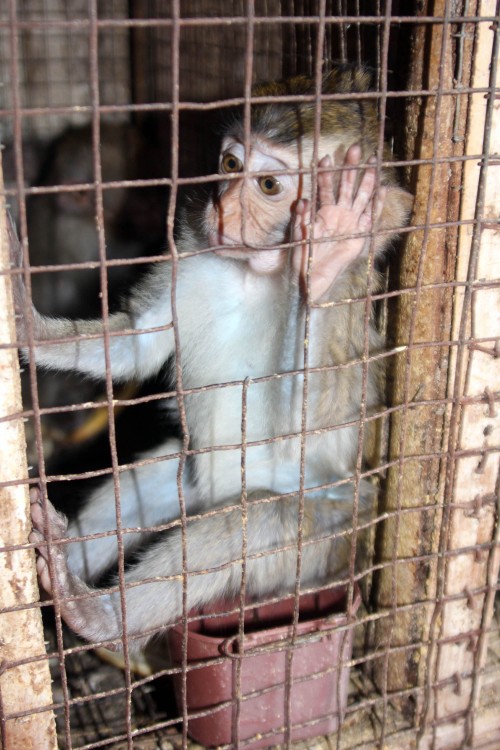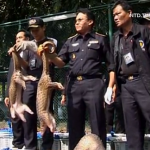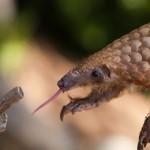
A sparse and declining population of the now critically endangered Sunda Pangolin remain in Bali’s wild frontiers, but they have little chance of survival without a dedicated rehabilitation program.
The island of Bali, Indonesia, is known as many things: a spiritual reprieve, tourist mecca and surfers idyll. Less known is its ecological diversity and the rare species that dwell in its wilder regions. Among these are the Sunda Pangolin, which was reclassified as ‘critically endangered’ by the IUCN earlier this year.
Pangolins are among the most trafficked creatures on earth – their scales prized in Chinese traditional medicine for alleged healing qualities, and their meat consumed as a luxury dish in Asia. Almost 23,400 illegally smuggled pangolins were intercepted between 2011-2013, and the quota that goes undetected is estimated to be in the hundreds of thousands over this period. Consequently, pangolin populations from Asia to Africa have experienced a well-documented and rapid decline over the past 10 years.
This has not gone unnoticed in Bali.
“It’s been a long time since I saw a pangolin. Maybe more than five years. I never see them anymore,” says Ketut Sulestra, a top-level ranger at West Bali National Park. “Ten years ago there were still many, many pangolins in the park. Sometimes when I drove my motorbike to work I would even spot them by the roadside.”

“The problem is that even though some animals are protected by our government, when people find them they kill them because they know they can sell the scales of that animal for a very expensive price,” adds Gusti Wiriwan, local to the rural, mountainous region of central Bali. He explains that nowadays the people who live in this area, especially on the highest points of the hills, are the ones most likely to still spot pangolins. Some are chance encounters, while others operate with the distinct intention to poach these nocturnal, shy, anteaters.
“Some Balinese people have special dogs that are trained to make a certain sound when they see or smell a pangolin close by. They go out looking for them in the middle of the night,” says Gusti. Once disturbed, pangolins employ their only defense – curling into a tight ball. Tragically, this only makes them easier targets to capture and bundle into bags.

In Bali, the animals are usually skinned or de-scaled, while the meat is kept for consumption. “To be honest, I tried pangolin meat just two years ago. My relatives that live in the mountains, near Pupuan, offered it to me for free. And honestly, it is very, very nice tasting meat. The people who live in that area know how to prepare it – they dry it first and then cook it,” Gusti says.
Local price for pangolin (or trenggiling, as it is called in Bahasa) meat is about 500,000 Indonesian Rupiah (US$42) for 1kg, according to Ketut. But the sale and consumption of pangolin parts has become less overt since awareness of its endangered status has spread in society, and the government has begun enforcing protection laws more stringently.

As recently as October last year, pangolins were seen traded at Denpasar Bird Market. But a visit to the same market last week revealed civet, monkey and rare bird species for sale – but no pangolins. “Now people cannot do that [sell pangolins openly] because they will go to jail for it,” says Gusti. “A few years ago, the government started to worry that pangolins will go extinct, so they became more strict,” he adds.

The general attitude of the Balinese also seems to be changing, becoming more aware and sympathetic to the plight of the pangolin – with some individuals making concerted efforts to safeguard the creature against all odds.“Just a few months ago my cousin was working on a construction site in central eastern Bali and the machinery dug up a hole with a pangolin family: two adults and two younger ones. My cousin put them in a bag and took them home, and after a few days he released them back into the wild,” says Gusti. “Also many people that live in the mountains will now not kill pangolins when they see them, because they know they are protected, and that not many are left.”
But what is lacking, explains Ketut, is financial backing from the government to support and encourage such efforts and sentiments among locals.
If financial and land resources could be established for a pangolin conservation program, there would be somewhere for the island’s precious intercepted pangolins to recover – and a chance for the remaining population to be safeguarded, and salvaged.

![Indonesia: Pangolin Smugglers Doing Their Dirty Work [Photos]](https://annamiticus.com/wp-content/uploads/2013/10/PangolinsArrive-150x150.jpg)


